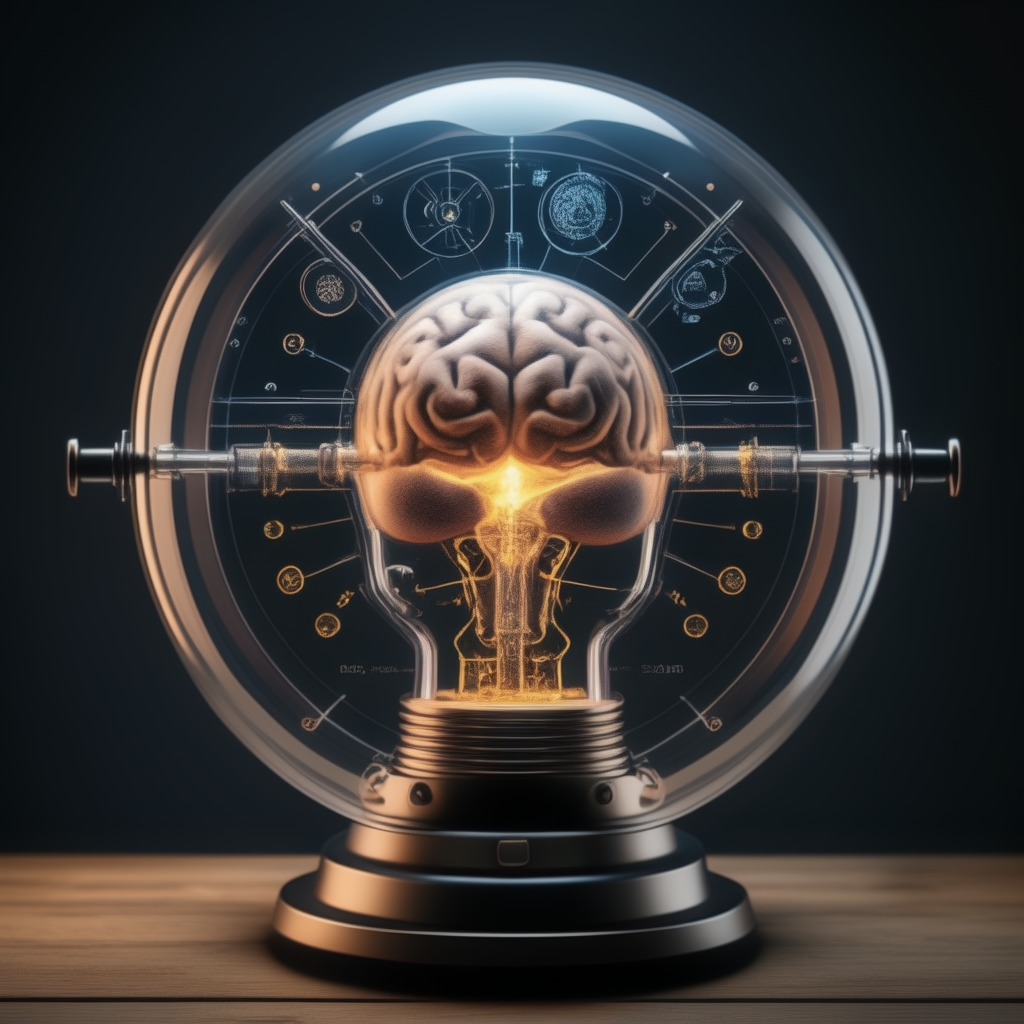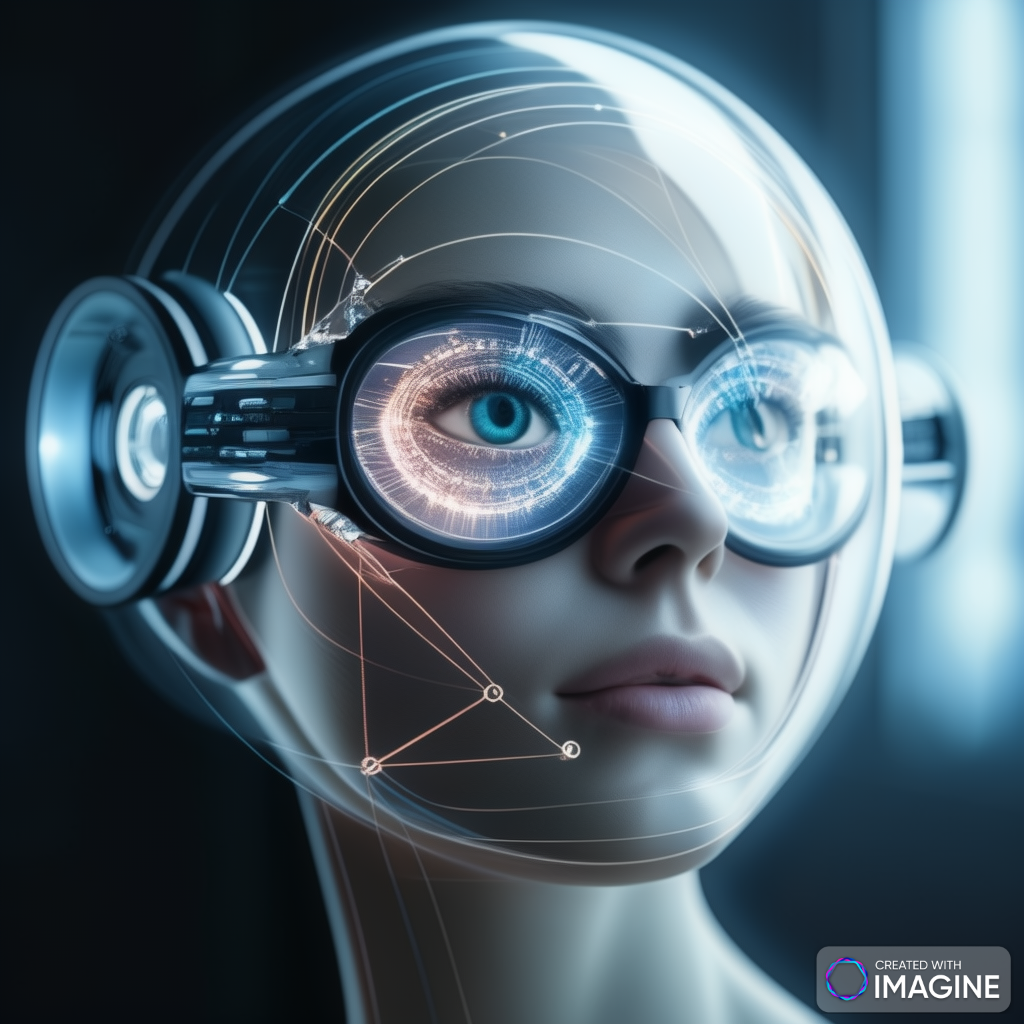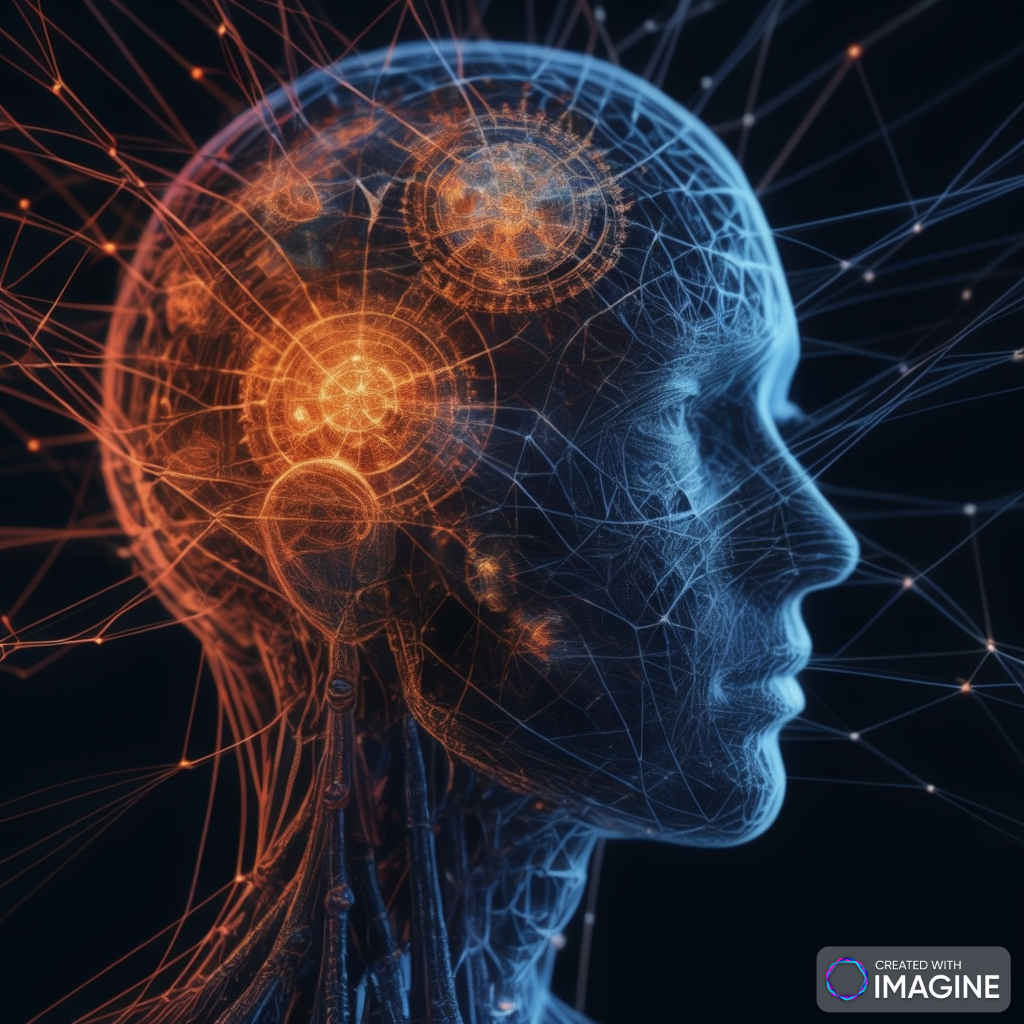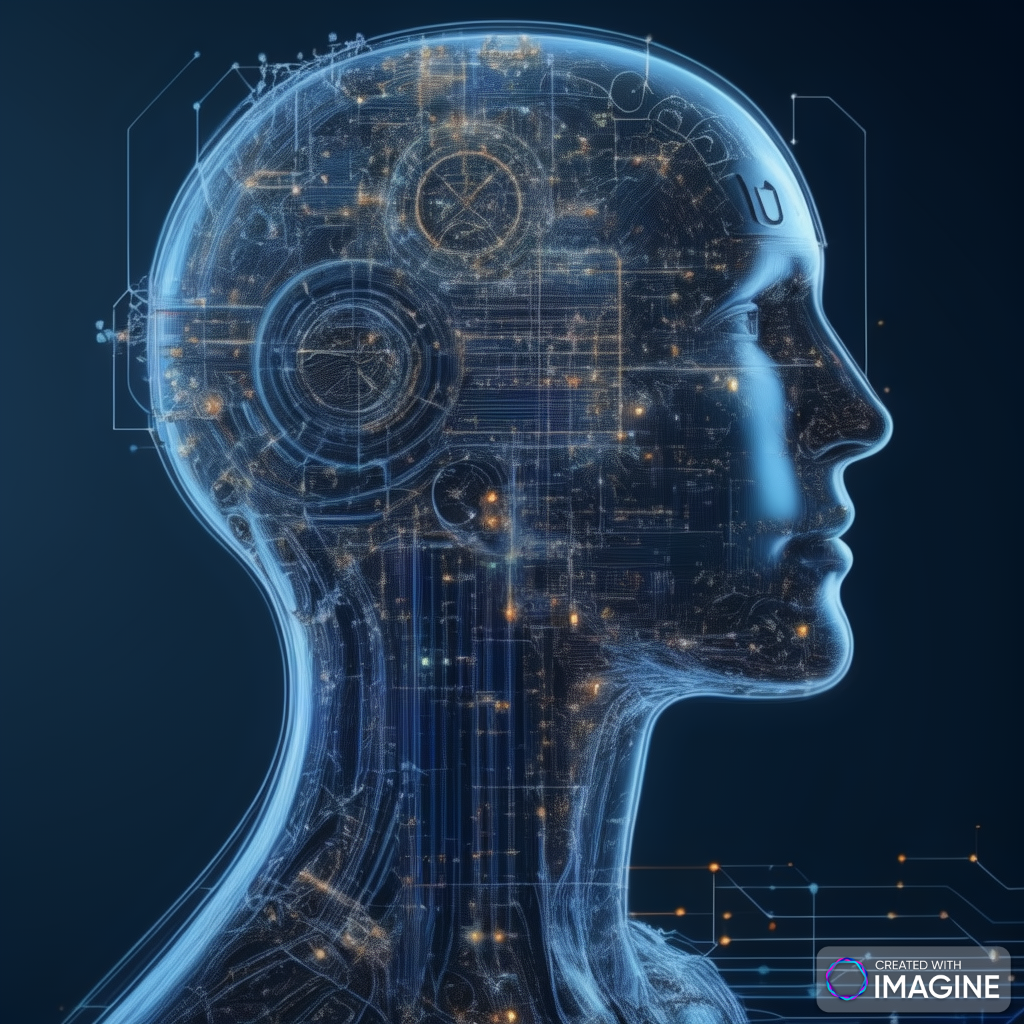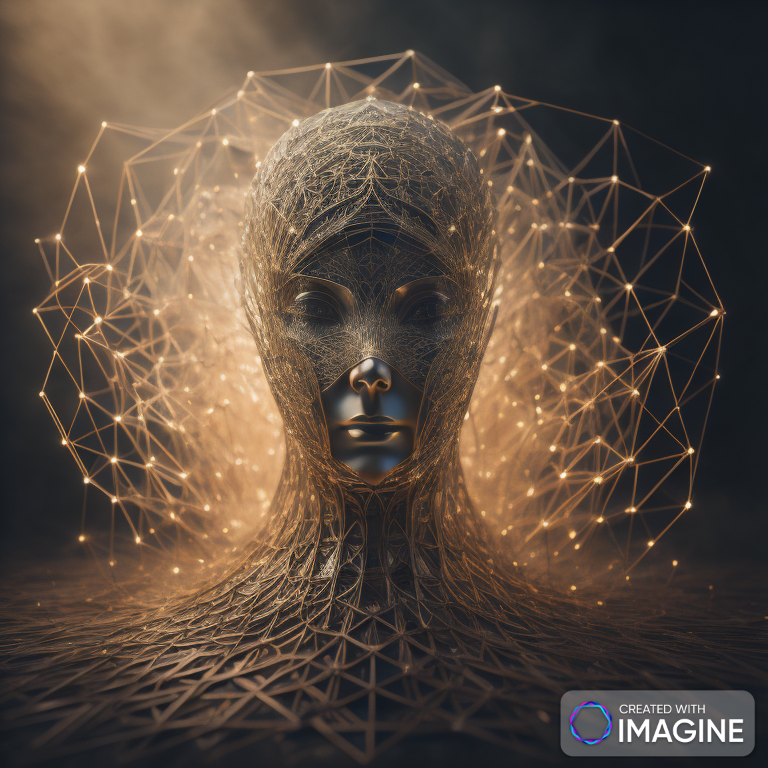Artificial Intelligence and Machine Learning: How Human Intelligence Inspires the Mathematical Representation of Neurons
Artificial Intelligence (AI) and Machine Learning (ML) are rooted in the desire to replicate human intelligence. The human brain, with its intricate web of neurons and synapses, is often viewed as the gold standard for creating machines capable of learning, reasoning, and decision-making. This concept underpins the design of neural networks, one of the most influential models in AI and ML, where the mathematical representation of neurons seeks to emulate the behavior of biological neurons. In this blog post, we will explore how AI and ML are inspired by human intelligence and the mathematical basis for neurons in these fields.
1. Human Intelligence as the Inspiration for AI and ML
The human brain is an incredible machine. It processes vast amounts of information, learns from experiences, makes decisions, adapts, and solves complex problems—all while using relatively little energy. It’s no wonder that AI researchers have long sought to model machines after human intelligence.
Key Aspects of Human Intelligence that Inspire AI/ML:
- Learning from Experience: Like humans, AI systems learn from data and past experiences to improve performance over time.
- Problem Solving: AI systems mimic the way humans solve problems by analyzing patterns and forming predictions.
- Adaptability: AI models are designed to adjust and refine their output as new data becomes available, similar to how humans continuously adapt to new information.
- Generalization: The human brain can generalize knowledge to new tasks, and AI seeks to achieve similar flexibility, especially through machine learning models like neural networks.
2. What Are Artificial Neural Networks (ANNs)?
To replicate the way human brains process information, AI systems use Artificial Neural Networks (ANNs). ANNs are one of the core technologies behind the success of AI and ML. Their structure is directly inspired by the biological neural networks in our brains.
- Biological Neurons: In the human brain, neurons are specialized cells that communicate through electrical and chemical signals. These signals travel through connections known as synapses. Neurons receive input, process it, and send output to other neurons. This system is responsible for all thought processes.
- Artificial Neurons (Perceptrons): ANNs simplify this biological model by creating “artificial neurons” or perceptrons, which mathematically mimic the function of biological neurons. These perceptrons are the building blocks of neural networks.
Basic Components of an Artificial Neuron:
- Inputs: These represent the data fed into the neuron. In biological terms, this would be analogous to the signals received by a neuron through its dendrites.
- Weights: Each input has an associated weight, which determines its importance. Weights are adjusted during training to improve the model’s accuracy, much like how synaptic strength changes during learning in the brain.
- Summation Function: The inputs are combined by multiplying them by their weights and summing the result, similar to how a neuron integrates incoming signals.
- Activation Function: After summing the inputs, the neuron applies an activation function (such as sigmoid, ReLU, or tanh) to determine whether to “fire” and send a signal to the next layer of neurons.
- Output: This is the final result that the artificial neuron passes on to other neurons or provides as a solution to the problem at hand.
Mathematically, this process can be described as:y=f(∑i=1nwi⋅xi+b)y = f\left( \sum_{i=1}^{n} w_i \cdot x_i + b \right)y=f(i=1∑nwi⋅xi+b)
Where:
- yyy = output of the neuron
- xix_ixi = input values
- wiw_iwi = weights
- bbb = bias term
- fff = activation function
3. Layers of Neural Networks: A Deeper Dive
Just as the human brain has multiple layers of neurons, ANNs consist of layers:
- Input Layer: This layer receives the raw data, much like how sensory neurons in the brain receive external stimuli.
- Hidden Layers: These intermediate layers perform various transformations and feature extraction on the data. The more hidden layers in a neural network, the more complex the patterns it can learn (a phenomenon referred to as deep learning). These layers mimic the inner workings of the human brain, where deep processing happens.
- Output Layer: This layer provides the final result or prediction based on the data processed through the network, akin to the motor or response actions the brain generates after processing stimuli.
The key is that each neuron in one layer is connected to every neuron in the next layer. This interconnected web is a simplified version of the synaptic connections in the brain, where each neuron can connect to thousands of others.
4. How Learning Occurs in Artificial Neural Networks
Human brains learn by strengthening synaptic connections between neurons when they repeatedly fire together, a concept often referred to as Hebbian learning. In ANNs, learning occurs through backpropagation and gradient descent.
- Backpropagation: After making a prediction, the ANN compares its output with the actual target values. The error between the predicted and actual output is used to adjust the weights of the neurons, allowing the network to learn from its mistakes. This adjustment happens through backpropagation, where the error is propagated backward through the network to update the weights.
- Gradient Descent: Gradient descent is an optimization technique used to minimize the error by adjusting the weights incrementally. The aim is to reduce the error as much as possible by finding the optimal weight values. It is akin to the brain refining its neural connections to improve cognitive tasks.
Mathematically, backpropagation and gradient descent involve calculating partial derivatives of the error with respect to each weight and then updating the weights in the direction that reduces the error.
5. The Role of Activation Functions
In biological neurons, the action potential is fired only when a certain threshold is crossed. Similarly, in ANNs, activation functions determine whether the neuron will activate (fire) and pass on a signal to the next layer.
Common activation functions include:
- Sigmoid: Outputs a value between 0 and 1, useful for probabilistic outputs.
- ReLU (Rectified Linear Unit): Outputs 0 for negative inputs and the input value itself for positive inputs. It’s computationally efficient and commonly used in deep learning.
- Tanh: Similar to sigmoid but outputs values between -1 and 1, which can help in centering the data.
Activation functions add non-linearity to the model, enabling the network to learn complex patterns that are impossible to capture with linear transformations alone.
6. Advanced Concepts: Deep Learning and Beyond
As ANN architectures have evolved, we’ve entered the era of deep learning, where networks with multiple hidden layers (deep networks) are trained to learn highly complex representations of data.
Convolutional Neural Networks (CNNs):
Inspired by the visual processing system of the brain, CNNs are specialized for image recognition and computer vision tasks. CNNs use filters (kernels) to detect patterns like edges, textures, and shapes, similar to how the visual cortex processes visual stimuli.
Recurrent Neural Networks (RNNs):
For sequential data such as speech and text, RNNs are used because they can maintain a memory of previous inputs. This mirrors the brain’s ability to remember previous states while processing new information.
Generative Adversarial Networks (GANs):
GANs consist of two competing networks: a generator and a discriminator. The generator creates fake data (images, text, etc.), while the discriminator tries to distinguish between real and fake data. Over time, the generator becomes increasingly skilled at producing realistic data. This system mimics the trial-and-error learning humans use when creating new concepts or ideas.
7. The Future: Bridging the Gap Between AI and Human Intelligence
While AI has made significant progress by drawing inspiration from the human brain, it’s important to recognize that artificial neurons and biological neurons operate on different principles. The human brain is far more efficient and complex than any AI system we’ve built.
- Energy Efficiency: The brain operates with incredible energy efficiency compared to modern computers and AI systems, which require vast amounts of computing power for training neural networks.
- Consciousness and Emotion: Current AI systems do not experience consciousness, emotion, or subjective experience. While neural networks can process information and learn from data, they lack self-awareness and the ability to “feel” in the way humans do.
- Ethical Considerations: As AI continues to advance, it is critical to consider the ethical implications of creating systems that may someday rival human intelligence in specific tasks.
To expand on the detailed blog post about how Artificial Intelligence (AI) and Machine Learning (ML) are inspired by human intelligence and how neurons are mathematically represented, here are additional advanced concepts and deeper insights that help build a more comprehensive understanding:
8. Biological Neurons and Learning Mechanisms: A Closer Look
Understanding the human brain’s biological mechanisms is crucial to appreciating the inspiration behind artificial neural networks. Biological neurons communicate through electrical impulses called action potentials, which travel down axons and stimulate the release of neurotransmitters at synapses. These chemical messengers transmit signals to neighboring neurons, thus enabling communication throughout the brain.
Key mechanisms in biological neurons:
- Synaptic Plasticity: The strength of connections (synapses) between neurons can change over time. This adaptability, known as synaptic plasticity, is critical for learning and memory. Similarly, in artificial neural networks, the ability to adjust weights during training is analogous to synaptic plasticity.
- Hebbian Learning: One well-known theory of how neurons strengthen their connections is Hebb’s rule, often summarized as “neurons that fire together, wire together.” This is a form of associative learning, and it has inspired unsupervised learning algorithms in AI, where systems learn patterns without explicit labels or guidance.
9. The Perceptron Model and Its Limitations
One of the earliest and simplest models of artificial neurons is the perceptron, introduced by Frank Rosenblatt in 1958. The perceptron is a binary classifier, meaning it can only solve linearly separable problems. It consists of a single layer where inputs are weighted, summed, and passed through an activation function to produce an output.
However, the perceptron has significant limitations:
- Linear Boundaries: The perceptron can only classify data that is linearly separable, meaning it cannot handle more complex data sets where decision boundaries are non-linear. This limitation led to the development of multi-layer perceptrons (MLPs), which can model more complex functions by introducing hidden layers.
- XOR Problem: A famous example that highlights the perceptron’s limitation is the XOR problem, which cannot be solved by a single-layer perceptron. This issue is addressed by introducing multiple layers and using more advanced training algorithms, which we see in modern deep learning models.
10. Multilayer Perceptrons and Deep Learning
Multilayer Perceptrons (MLPs) are networks where neurons are arranged in layers, allowing them to model more complex and non-linear functions. They consist of an input layer, one or more hidden layers, and an output layer. The inclusion of hidden layers transforms MLPs into a universal approximator, meaning they can approximate any continuous function, given enough neurons and data.
This architecture laid the groundwork for modern deep learning:
- Deep Learning Networks: These are MLPs with many hidden layers, also called deep neural networks. They excel at learning hierarchical representations of data, where higher layers capture more abstract features. For example, in image recognition, lower layers might identify edges, while higher layers recognize complex objects like faces or cars.
- Backpropagation in Depth: The deeper the network, the more challenging it becomes to train due to the vanishing gradient problem, where gradients diminish as they are propagated backward through layers. Modern techniques like ReLU (Rectified Linear Units) and advanced optimizers help mitigate this issue.
11. The Importance of Activation Functions in Complex Learning
While the sigmoid and tanh activation functions were popular early on, they posed issues like vanishing gradients in deep networks. These functions squash outputs into a narrow range, making learning difficult for deep networks.
Modern solutions include:
- ReLU (Rectified Linear Unit): The ReLU activation function is non-linear and avoids the vanishing gradient problem by outputting the input value for positive inputs and zero for negative ones. This allows gradients to flow more effectively, making ReLU highly effective for deep learning models.
- Leaky ReLU and Parametric ReLU: These are variations of ReLU that allow small gradients even for negative inputs, solving the issue of dying neurons where traditional ReLU would deactivate certain neurons permanently during training.
12. Regularization Techniques: Preventing Overfitting in Neural Networks
One of the biggest challenges in AI and ML models is preventing overfitting, where a model becomes too specialized in the training data and fails to generalize to new, unseen data.
Some key regularization techniques include:
- Dropout: A technique where random neurons are ignored during the training process. This forces the network to learn more robust features that are not reliant on any single neuron.
- L2 Regularization (Ridge Regression): Adds a penalty for large weights, encouraging the model to use smaller, more generalized weights. This helps prevent overfitting by smoothing the decision boundary.
- Data Augmentation: A practical method used in image recognition where the training data is artificially expanded by applying transformations such as rotations, flips, and color shifts. This teaches the network to become more resilient to variations in the data.
13. Convolutional Neural Networks (CNNs) and Vision
Convolutional Neural Networks (CNNs) are specialized for image and video processing. They leverage a unique architecture that mirrors how the visual cortex processes images by focusing on local features like edges, corners, and textures.
Key features of CNNs:
- Convolutional Layers: Instead of fully connected layers, CNNs use convolutional layers where neurons are connected to small patches of the input data. This allows the network to detect patterns at various scales.
- Pooling Layers: CNNs use pooling (often max-pooling) to reduce the dimensionality of feature maps, retaining the most important information and making the network more efficient.
- Hierarchical Feature Learning: Lower layers in CNNs learn simple features like edges and textures, while deeper layers capture higher-level features like shapes and objects.
CNNs are widely used in tasks like image classification, object detection, and segmentation, powering applications in self-driving cars, facial recognition, and medical imaging.
14. Recurrent Neural Networks (RNNs) and Sequence Learning
While CNNs are excellent for spatial data like images, Recurrent Neural Networks (RNNs) are designed to process sequential data, such as time series, speech, and natural language.
Key characteristics of RNNs:
- Memory: RNNs can maintain information about previous inputs through their hidden states, making them ideal for tasks like language modeling and speech recognition.
- Training Challenges: RNNs suffer from vanishing and exploding gradient problems due to the repeated multiplication of gradients during backpropagation through time. To address this, more advanced variants like Long Short-Term Memory (LSTM) networks and Gated Recurrent Units (GRU) were developed. These architectures are more effective at retaining long-term dependencies in data.
15. Transfer Learning: Leveraging Pre-Trained Models
Transfer learning is a powerful concept where models pre-trained on large datasets can be fine-tuned for specific tasks with smaller datasets. It mimics the way humans transfer knowledge from one domain to another.
For example:
- ImageNet Pre-trained Models: Models like VGG, ResNet, and EfficientNet, pre-trained on the ImageNet dataset, are often fine-tuned for tasks like medical imaging or autonomous driving. This saves computational resources and time, allowing models to leverage previously learned features.
Transfer learning is particularly useful in domains where labeled data is scarce or expensive to obtain.
16. The Role of Unsupervised and Self-Supervised Learning
While most neural networks rely on supervised learning, where models are trained with labeled data, unsupervised learning seeks to uncover hidden patterns in data without explicit labels.
- Self-Supervised Learning: This new paradigm is gaining attention, especially in natural language processing (NLP) and computer vision. In self-supervised learning, the system generates labels from the data itself. For instance, language models like GPT-3 are trained to predict the next word in a sentence, learning rich representations of language without explicit labels.
- Autoencoders: These are a type of unsupervised learning model used to learn compressed representations of data. They consist of two components: an encoder that reduces the input to a lower-dimensional space and a decoder that reconstructs the original input from this compressed representation.
17. Reinforcement Learning: Learning from Interaction
Reinforcement learning (RL) is inspired by human decision-making processes where an agent learns to perform tasks by interacting with an environment.
Key aspects of RL:
- Agent-Environment Interaction: The agent receives feedback in the form of rewards or punishments based on its actions and uses this feedback to improve its performance. This mirrors how humans learn through trial and error.
- Exploration vs. Exploitation: In RL, the agent must balance exploring new actions to discover better strategies and exploiting known actions to maximize rewards. This trade-off is crucial to building optimal policies in dynamic environments.
RL is used in areas such as robotics, game-playing (e.g., AlphaGo), and autonomous systems, where learning from experience is critical.
18. AI’s Limitations Compared to Human Intelligence
Despite AI’s impressive progress, there are still fundamental differences between AI and human intelligence:
- Contextual Understanding: While AI can learn patterns and make predictions, it lacks the deep contextual understanding humans possess. Humans can understand abstract concepts, metaphors, and cultural nuances in ways that AI struggles to replicate.
- Generalization: Human intelligence is capable of transfer learning across vastly different domains, while AI systems, even with transfer learning, often require significant retraining to adapt to new tasks.
- Consciousness and Emotion: AI lacks consciousness, emotions, and self-awareness, key aspects of human intelligence. While AI can mimic emotional responses, it does not experience feelings in the way humans do, limiting its ability to make ethical decisions or judgments in ambiguous situations.
By exploring these advanced concepts, we gain a fuller understanding of how AI and ML are built on principles inspired by the brain, as well as the challenges and opportunities ahead. AI continues to push the boundaries of what machines can learn, but replicating the full complexity of human intelligence remains a distant goal.
Conclusion
Artificial Intelligence and Machine Learning are deeply inspired by human intelligence, particularly the structure and function of neurons. By using mathematical models that emulate biological neurons, AI systems have been able to learn, adapt, and solve problems with increasing sophistication. From perceptrons to deep learning, neural networks are a testament to how nature’s designs inspire technological innovation. While we are far from fully replicating human intelligence, the journey continues as AI systems become more powerful and closer to mimicking the brain’s remarkable abilities.

